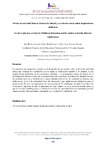Mostrar o rexistro simple do ítem
Niveles de actividad física en Educación Infantil y su relación con la salud: implicaciones didácticas
| dc.contributor.author | González Díaz, Iria María | |
| dc.contributor.author | Fraguela-Vale, Raúl | |
| dc.contributor.author | Varela Garrote, Lara | |
| dc.date.accessioned | 2019-04-26T11:28:41Z | |
| dc.date.available | 2019-04-26T11:28:41Z | |
| dc.date.issued | 2017 | |
| dc.identifier.citation | Sportis, 2017, 3 (2):358-374 ISSN: 2386-8333 | es_ES |
| dc.identifier.issn | 2386-8333 | |
| dc.identifier.uri | http://hdl.handle.net/2183/22774 | |
| dc.description.abstract | [Resumen] La siguiente investigación consiste en el desarrollo de un estudio sobre el nivel de actividad física que realizan los estudiantes en la etapa de Educación Infantil y el análisis de las implicaciones didácticas de los resultados obtenidos. Los principales centros de interés de la investigación fueron el nivel de actividad física del alumnado en Educación Infantil durante las jornadas lectivas y, en alguno de los sujetos, durante todo el día. Se analizan los factores que influyen en el nivel de actividad física del alumnado y las implicaciones didácticas para el profesorado. Se hizo un seguimiento de una muestra de 25 estudiantes de entre 5 y 6 años. Se confirma la hipótesis de que el alumnado de estas edades no se mueve lo suficiente y que la escuela contribuye poco a obtener los niveles de actividad física recomendados por las organizaciones internacionales vinculadas con la salud y la calidad de vida | es_ES |
| dc.description.abstract | [Abstract] The following research consists in the development of a study about the physical activity levels that students of the pre-school education does as well as the analysis of the didactic implications of the results. The main topics were the physical activity levels of the pre-school students during the school hours and, in some cases, during all the day. The factors that influence in their physical activity levels and the didactic implications for the teachers were analysed. In order to achieve this, a follow- up was made of a total sample of 25 preschool children with an average age of 5,44 (D= 0,81) years.The results of this research show that students of these ages do not move enough and that the school contributes little to obtain the physical activity levels recommended for the internationals organizations linked with the health and the quality of life. So students still need to be further encouraged to exercis | es_ES |
| dc.language.iso | spa | es_ES |
| dc.publisher | Universidade da Coruña | es_ES |
| dc.rights | Atribución-NoComercial-SinDerivadas 3.0 España | es_ES |
| dc.rights.uri | http://creativecommons.org/licenses/by-nc-nd/3.0/es/ | * |
| dc.subject | Actividad física | es_ES |
| dc.subject | Salud | es_ES |
| dc.subject | Tiempo de práctica motriz | es_ES |
| dc.subject | Educación infantil | es_ES |
| dc.subject | Physical activity | es_ES |
| dc.subject | Health | es_ES |
| dc.subject | Driving practice time | es_ES |
| dc.subject | Pre-school education | es_ES |
| dc.title | Niveles de actividad física en Educación Infantil y su relación con la salud: implicaciones didácticas | es_ES |
| dc.title.alternative | Levels of physical activity in Childhood Education and its relation to health: Didactic implications | es_ES |
| dc.type | info:eu-repo/semantics/article | es_ES |
| dc.rights.access | info:eu-repo/semantics/openAccess | es_ES |
| UDC.journalTitle | Sportis | es_ES |
| UDC.volume | 3 | es_ES |
| UDC.issue | 2 | es_ES |
| UDC.startPage | 358 | es_ES |
| UDC.endPage | 374 | es_ES |
| dc.identifier.doi | https://doi.org/10.17979/sportis.2017.3.2.1888 |






